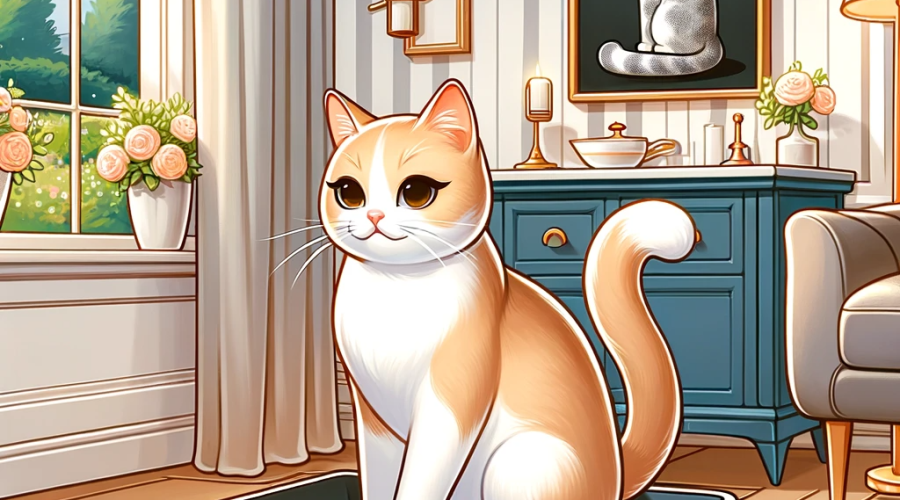Unlock Your Pet’s Secret to Perfect Potty Habits!
Mastering the art of potty training can feel like deciphering an ancient code, but fear not, pet parents! With the right knowledge and a sprinkle of patience, you can guide your furry friend to impeccable potty manners, transforming your home into a no-accident zone. Perfecting potty habits is not just about keeping your floors clean; it’s about understanding and communicating effectively with your beloved pet.
Consistency is the cornerstone of any successful potty training endeavour. Pets thrive on routine, and establishing a regular schedule for bathroom breaks is crucial. Aim to take your dog out first thing in the morning, after meals, following naps, and right before bedtime. For felines, ensure their litter box is in a quiet, accessible location and cleaned regularly. By setting a reliable timetable, your pet will soon learn when and where to do their business.
Understanding your pet’s natural instincts is also key to unlocking their potty potential. Dogs, for example, are den animals by nature and will instinctively avoid soiling their sleeping quarters. Use this to your advantage by crate training – it taps into your dog’s desire for a clean den and helps prevent accidents. Just ensure the crate is the right size – cosy enough to be considered a den but with enough room to stand, turn, and stretch comfortably.
Catering to your pet’s preferences can make all the difference. Just as humans have their own bathroom likes and dislikes, so do our pets. Some dogs may prefer grassy areas while others opt for gravel or concrete. Observe where your pet feels most comfortable doing their business and try to mimic these conditions in your yard or during walks. For cats, experiment with different types of litter and litter boxes until you find the combination that your kitty finds most appealing.
Positive reinforcement is the secret sauce of potty training. Every time your pet eliminates in the correct spot, celebrate their success with treats, praise, or playtime. This positive association will encourage them to repeat the good behaviour. Conversely, if an accident happens, avoid punishment. This can create fear and confusion, leading to more accidents. Instead, calmly clean up and redirect your pet to the appropriate potty area.
Don’t underestimate the power of scent. Both dogs and cats use their keen sense of smell to determine where to go potty. If your pet has an accident, clean the area thoroughly with an enzymatic cleaner to remove any lingering odours that might tempt them to re-offend. On the flip side, use their scent to your advantage – leave a soiled paper towel or piece of poop in the designated potty area to signal to your pet that this is the bathroom zone.
Patience is perhaps the most important ingredient in the potty training recipe. Every pet is unique, and some may take longer to develop perfect potty habits. If you feel like you’re not making progress, take a step back and consider if there’s anything in your approach that might need tweaking. Are you taking your dog out often enough? Is the litter box in a location your cat is happy with? Sometimes, small adjustments can yield big results.
Monitoring your pet’s diet and water intake can also play a significant role in their potty habits. A consistent feeding schedule equals a predictable potty schedule. Be mindful of how much water your pet drinks, especially before bedtime. Limiting water intake in the evening (while making sure they’re still properly hydrated) can help reduce the chances of overnight accidents.
For those particularly challenging cases, seeking professional help can be a game-changer. Dog trainers and animal behaviourists have a wealth of knowledge and experience to help troubleshoot potty training issues. They can provide tailored advice and strategies to suit your individual pet’s needs. Don’t be afraid to reach out – sometimes it takes a village to raise a perfectly potty-trained pet!
In the end, unlocking your pet’s secret to perfect potty habits is a journey of communication, understanding, and a fair bit of trial and error. Celebrate the small victories along the way and remember that every pet can learn with the right guidance and encouragement. So, keep your spirits high and your cleaning supplies handy – a spotless home and a happy, well-trained pet are well within your reach!
FAQs
Q: What are the first steps to training my pet for perfect potty habits?
A: Begin by establishing a regular feeding schedule and immediately taking your pet to their designated potty area after eating. Consistency is key in helping your pet associate this area with going to the toilet.
Q: How can I signal to my pet it’s time to go potty?
A: Choose a command word or phrase like “Go potty” or “Toilet time,” and use it every time you take your pet to their designated potty spot. With repetition, they’ll learn to associate the command with the action.
Q: What should I do if my pet has an accident indoors?
A: Clean the area thoroughly with an enzymatic cleaner to remove any lingering scent, which could attract them back to the same spot. Then, calmly redirect them to the correct potty area without showing anger.
Q: How often should I take my puppy or kitten out for potty breaks?
A: Puppies usually need to go out every 1-2 hours, whereas kittens should have constant access to a clean litter box. As they grow older, the time between breaks can be gradually extended.
Q: Can positive reinforcement improve my pet’s potty habits?
A: Absolutely, rewarding your pet with treats, praise, or playtime right after they use the potty area correctly reinforces good behaviour and encourages them to repeat it.

